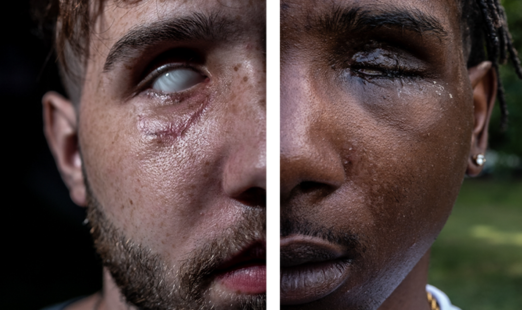
My mind raced in the seconds after I was shot.
I heard the gun go off and turned my head toward the sound, just in time to watch the spinning aluminum canister slam into my brow. Everything went black. I stumbled. When I regained my balance and opened my eyes, the sight in my right eye was gone. Something in my head told me the tear gas canister was the last thing I’d ever see clearly.
It was May 30, 2020. George Floyd’s death was still headlining most news reports. The country was finally (rightly) paying attention to police killings. Meanwhile, during the protests that followed, another less deadly but still alarming trend was developing: “blinding by police.”
According to Shot in the Head, a report released in September 2020 by Physicians for Human Rights, during the protests between May 26 and July 27 of last year, U.S. law enforcement officials shot 115 people in the head with “less lethal weapons.” Of these victims, at least 30 suffered permanent ocular damage.
“These were some of the worst injuries we’ve seen in a long time,” George Williams, M.D., former president and current spokesperson for the American Academy of Ophthalmology (AAO), explained to me. “If our mission is to protect sight and we are seeing these injuries, we have to step up and say something.” The spike in ocular traumas associated with the protests caused the AAO to issue its first-ever public condemnation of law enforcement’s use of rubber bullets.
As a professional photojournalist, I’d been covering the protests outside the White House when I was shot. It’s perhaps needless to say that any eye-related injury is basically a photographer’s worst nightmare, tantamount to a musician going deaf.
While I dealt with the aftereffects of my own injury and tried to make sense of what had happened, I came up with a new mission for myself: I set out to meet as many of the other people blinded by the police as I could.
"I literally felt like they were playing Call of Duty."
Earlier on the same day that I was injured in the nation’s capital, 400 miles away in Cleveland, John Sanders was shot in the face with a beanbag round. Lead pellets from the canvas bag ripped through his left eyelid and ruptured the globe of his eyeball.
I met John, a 24-year-old former journalism student, last July at his friend’s house in a middle-class neighborhood in Akron, Ohio. A self-assured, tall and slender Black man, John’s presence was calming. We sat at a picnic table in his suburban backyard and compared notes about our traumas. A plastic deer used for target practice listed to the side a couple of feet behind us.
John tells me how, in shock and worrying he’d be shot again, he lay down in the street. “You know, ’cause my eye was literally hanging out of my head,” he says in his nonchalant deep voice. “‘Don’t make yourself a target, get down and hopefully someone comes over and gets you.’” As he flattened himself against the asphalt, blood puddled under his head. Eventually a group of panicked protesters gathered around him and carried him off the street. He was stabilized and taken to the hospital.
“It almost seems like they were doing target practice or something,” John recalls. “I literally felt like they were playing Call of Duty out there.”
Unfortunately, John’s injuries were not virtual. In the first three months after being shot, he endured three surgeries: one to stitch up his eye; one enucleation (removal of the eye) and eyelid reconstruction; and one to fill in his orbit with fat from other parts of his body. He was also hospitalized for diabetic ketoacidosis, a potentially life-threatening problem common among diabetics. John is sure it was due to his heightened stress and depression, a direct result of being partially blinded.
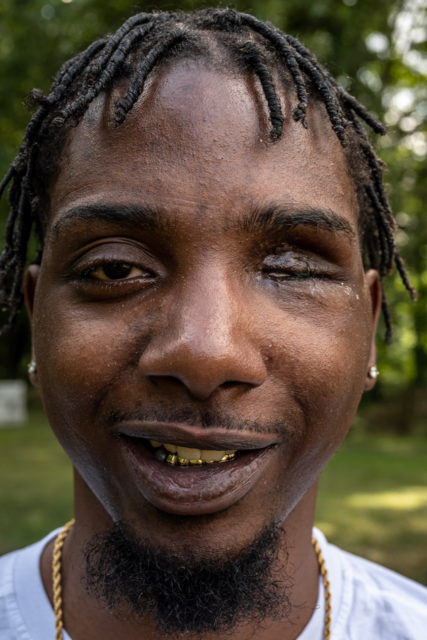
As police forces across the U.S. and the globe have grown more militarized, there has been a rise in injuries like John’s and mine — a result of the proliferation of “less lethal weapons” that are not designed to kill, yet leave many civilians with life-changing injuries.
In the peace that followed World War I, law enforcement and military officials around the world began developing new weapons for crowd control. The goal was to create tools that would afford authorities the ability to manage large groups of people without relying solely on violent baton charges and lethal force.
Chief among those new weapons was CS gas, more commonly known as tear gas. First discovered in 1928 by chemists at Middlebury College, tear gas was understood to be a less toxic substance than the CN gas used in the trenches of Europe. It soon became a common tool for crowd dispersal for police departments across the United States, including during labor strikes and civil rights marches.
In the 1960s, the British military developed rubber bullets as a “nonlethal” way to suppress protesters in Northern Ireland, and Argentine intelligence officers adapted electric cattle prods to torture detainees during interrogations. A few decades later, “less lethal weapons” emerged as an important growth sector for the international arms industry, leading to the development of new technologies.
Today, law enforcement and military forces alike have a wide array of less lethal weapons to draw upon. There are kinetic impact projectiles such as foam-nosed bullets, beanbags, pepper balls and wooden baton rounds, to name a few. There are chemical irritants such as tear gases, pepper spray and mace, as well as conducted energy devices such as Tasers and stun guns. Flash bangs and smoke grenades are used to disorient targets. Finally, many police departments across the U.S. are now using acoustic weapons such as the Long Range Acoustic Device (LRAD), which emits an extremely high decibel sound designed to cause physical discomfort and dizziness.
On the same day that John and I were shot, Soren Stevenson was among a group of protesters in Minneapolis who tried to march onto the westbound lane of Interstate 35. Police were quick to arrive on the scene. Most of the protesters hadn’t even reached the on-ramp.
When calls went out for “white bodies to the front,” Soren volunteered. He’d just linked arms with others on the front line when a 40mm plastic round cracked against his head.
“I felt my face, and it was wet and soft where there should have been bone,” Soren recalls. Beyond losing his eye, he was also robbed of his sense of smell and some feeling on the left side of his face.
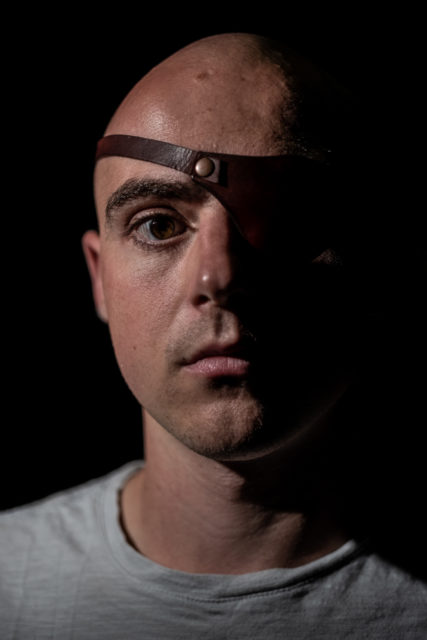
Soren and I met up in a park near his house in Minneapolis. It was dusk on a cool August night. JusticePirate, his handle on social media now that he wears a leather eye patch, was 25 years old and had recently earned a master’s in public policy from the University of Minnesota. However, his injury and the COVID-19 pandemic had stunted his plans for the future. Soren had just started a job search when he was shot. Between surgeries and recovery, he wasn’t able to find employment until almost a year later, in April 2021.
Soren emphasizes that his injury is small compared to the everyday violence black and brown communities face without respite, and he still hopes that the protests will lead to systemic change.
“This is a moment Americans can’t miss,” Soren says. “We can’t miss this moment to demand both elected and unelected officials do something about racial inequity and police violence.”
“They shot me because I’m Black.”
Nikita Tarver, 33, was getting ready for another surgery when I picked her up in my too-cramped-for-the-COVID-era economy rental car. Since being shot on May 30, she’d moved into her mother’s humble apartment in a gentrified Seattle neighborhood.
“The saddest part of it all was what my friend said afterward,” Nikita recalls. “She said that just before I was shot, she looked back and saw me, the only Black face in a sea of white protesters. They shot me cause I’m Black. That’s messed up.”
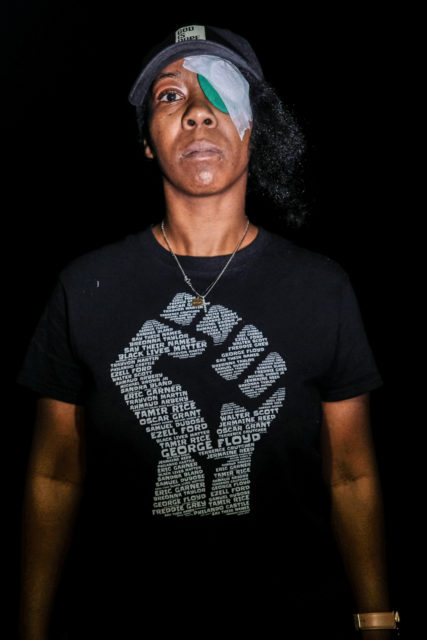
Nikita had responded to a message I’d sent to her through GoFundMe, where a friend had created a campaign to help pay for Nikita’s growing pile of medical bills. She told me she wanted someone to talk to. Someone who could understand what she was going through. So did I. For months, we sent each other quick text messages, updates on our trauma animated by eye-patched Memoji.
“… it’s going to be awesome to have somebody going through the same experience to actually speak to. I mean I have people in my corner but they don’t truly understand my situation,” Nikita writes in one message.
I reach out late on another night to vent my frustrations: “I’m done moping around the house. but I get tired super quick!!! And then have to take a long nap. Sucks cause I’m not spending enough time with my kids … hopefully though things will slowly get better … I’ve picked the camera back up and that’s a good thing.”
We talk about our families and plan to start journaling our recoveries, but we don’t actually talk about being shot until I fly out to Seattle to meet Nikita in person.
As we talk, a tear rolls out of Nikita’s good eye. She sighs a deep breath.
“Every day is a roller coaster. I think I’m at about 100 days and I’ve cried every day.” Nikita is transparent in her fragility. “I’m fighting for my f---ing eye, never in a million years did I think I was going to be facing this.”
The shot caused a severe scarring of her cornea and left her retina partially detached. Doctors couldn’t give her a timetable or a definite prognosis for the future.
Since our interview, Nikita has recovered some vision, but it is still so distorted that she’s resigned herself to wearing an eye patch.
“Blinding by police” is not a trend that is unique to the United States. Wherever less lethal weapons are used with frequency, some targets inevitably lose their eyes. During the protests that rocked Kashmir, the disputed region between India and Pakistan, in 2016, it is estimated that thousands of eyes were lost to bird shot fired by Indian security forces. In Beirut, at least two eyes were lost in one night during protests following the Lebanese government’s criminal mismanagement of the August 2020 port explosion. In France, the 24 people partially blinded during the Yellow Vest uprising in 2018 became popularly known as the mutilé, or mutilated.
And in Chile, more than 400 people have been blinded or partially blinded since protests against neoliberal economic policies and for a new constitution began in 2019. More than anywhere else, they have become famed embodiments of the broader political struggle — living martyrs of the estallido, or uprising.
“How could someone rob something so beautiful, so marvelous to humans as sight?” a weeping Albano Toro asked the camera in one of dozens of video testimonials collected from members of the Coordinadora de Victimas por Trauma Oculares, a political organizing platform created by Chileans who’ve lost their eyes to less lethal weapons. Built on a praxis of mutual aid and solidarity, the Coordinadora help members receive medical attention, raise funds for those left destitute due to their injuries, coordinate political demonstrations against police brutality, and advocate for transformative change in Chilean society. It’s the kind of advocacy group that, unfortunately, many communities around the world are likely going to need more of in the years to come.
In the ambulance ride to the MedStar Washington Hospital Center, an EMT wrapped my head with a bandage. He asked me some basic questions, presumably to rule out a severe concussion. The bright lights and reflective metal surfaces made me squint. I was in shock; fight or flight had kicked in. There was still relatively little pain, but my senses were alert and I was acutely aware of my surroundings. Accompanying me on the ride were two Metropolitan police officers, also injured in the protests. I glared in their direction. In my mind I ridiculed them for the minor bruises they appeared to have suffered. I didn’t want to show any weakness, even if it was objectively clear that I was in a far more precarious state than they were.
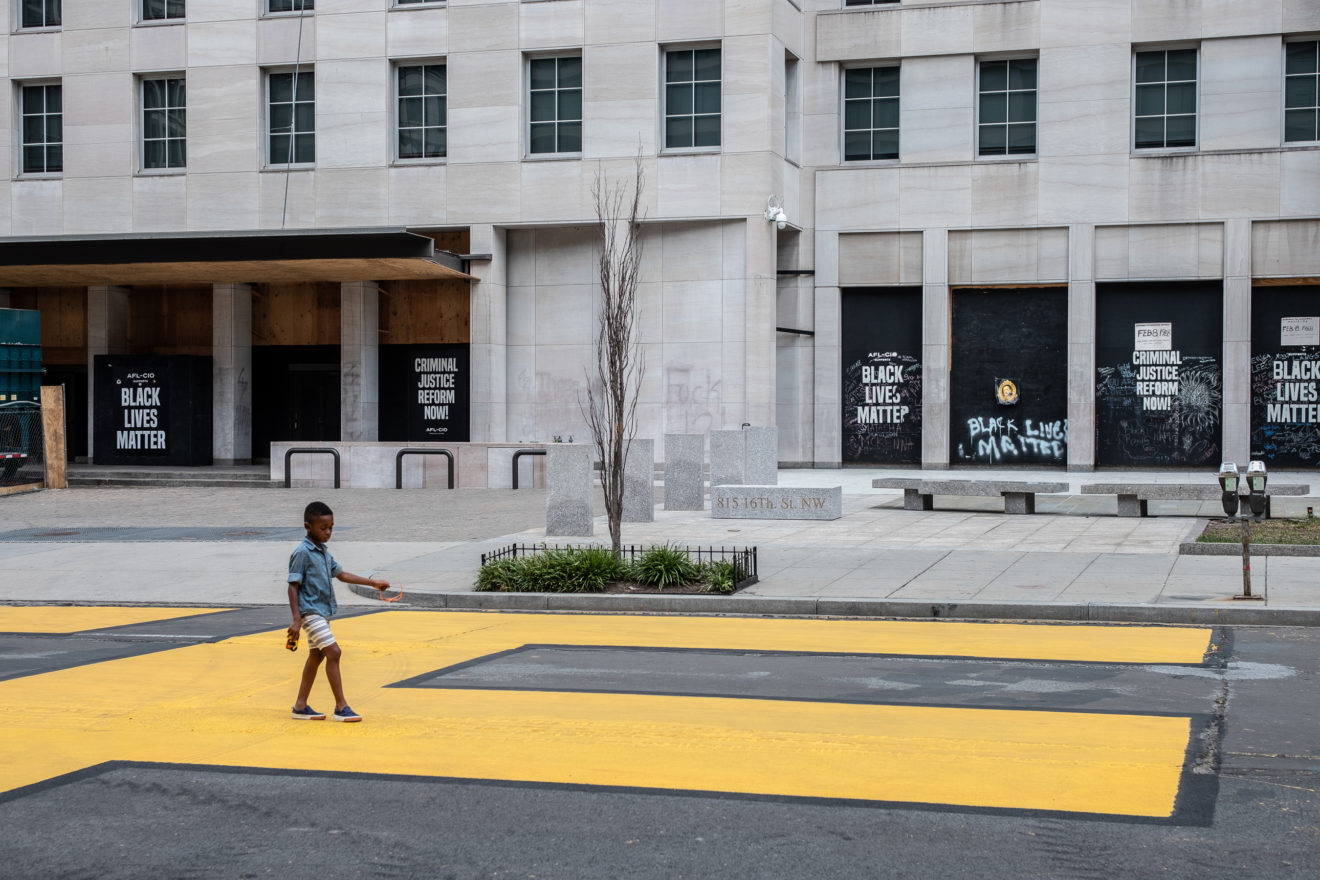
On Sunday, May 31, I was released from the emergency room with an appointment to see a specialist later that afternoon. Twenty-four hours later, I was in an operating gown getting ready to go under the knife. Retina specialists cleaned out the hemorrhaging in the back of my eye, reattached my retina and inflated a gas bubble against the back of it. Finally, a scleral buckle was inserted around my eye. This silicone band held the retina in place by applying pressure on the globe from the outside. It was a permanent addition to my anatomy.
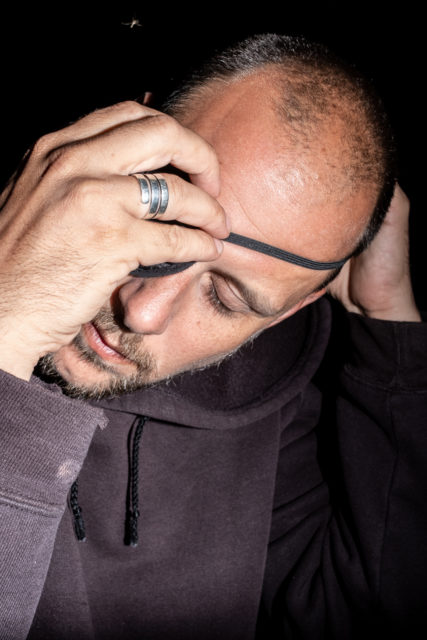
Until the gas bubble was absorbed by my body and the swelling receded, my doctors were reluctant to give me a definite prognosis about how much sight I’d recover. I was sent home and instructed to lie on my left side for the next seven days. Brisk movements could reinjure the eye, and gravity would help maintain pressure on the back of the retina, improving my chances of some recovery of sight.
Matthew Leo Cima was also bedridden, albeit under stricter guidelines. While I lay on my couch in that first week after my operation, I found out about Matthew’s injury on Facebook and immediately sent him a direct message.
For the first week, Matthew had to lie facedown for two hours at a time, only interrupted by 10-minute breaks when he could sit or stand. He tells me that his brow is bruising from the hole on the massage table where he puts his face. He explains that he hasn’t been sleeping well for fear of rolling over in the night.
“I don’t know if you have had a similar reaction but I haven’t even cried yet because I’m so scared for what the pressure in my eye may do from it,” Matthew writes in one of his first messages.
Matthew was also shot in D.C., while protesting in Lafayette Square on May 31.
“I just remember feeling it from this direction, and then hearing the crack of my skull from the ball hitting it,” he remembers. “And then feeling ice cold, smelling blood, and then a bright light that kinda looked like the negative of a Rorschach puzzle.”
A trained cicerone (similar to a wine sommelier, a cicerone is an expert on beer), Matthew brought the same attention to detail used in his day job to his understanding of the medical care he was receiving.
“Submacular hemorrhages and a retinal tear in the macula,” he writes, “Also hyphema but that is clearing on its own. I had surgery on Friday (days after my injuries), it was a pars plana vitrectomy with a gas bubble. My doctor wants to wait for the gas to disappear before talking results and expectations.”
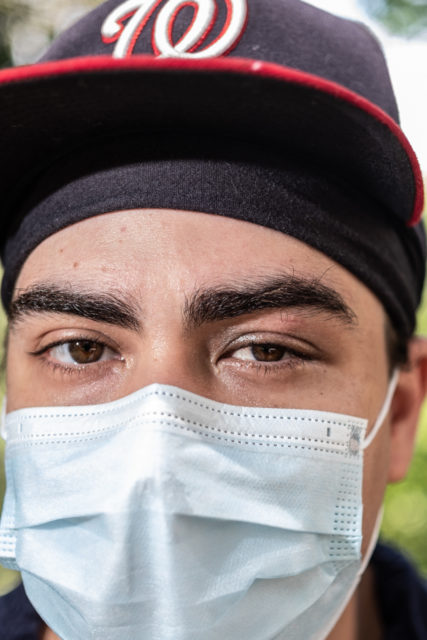
He knows far more about his injury than I do about mine. The more we chat, the more our conversations reveal difficult truths about the differences between our injuries. Whereas my detachment is on the periphery, Matthew’s is in the center of his retina. While I am getting better, he is facing more surgeries.
“I’m not excited to start over with surgery, recovery,” he tells me, “and the finality it represents is also very daunting. But I just keep reminding myself it will all pass soon enough.”
Matthew’s fortitude gave me hope in those first months. As soon as the doctors gave me the green light, I was on my feet again. Recovery was tiring though. There were many afternoons spent napping. The gas bubble inverted the light entering my optic nerve. For a short period of time I was seeing things upside down, an exhausting exercise for my brain, which was tasked with collating and interpreting information from both my good and bad eye.
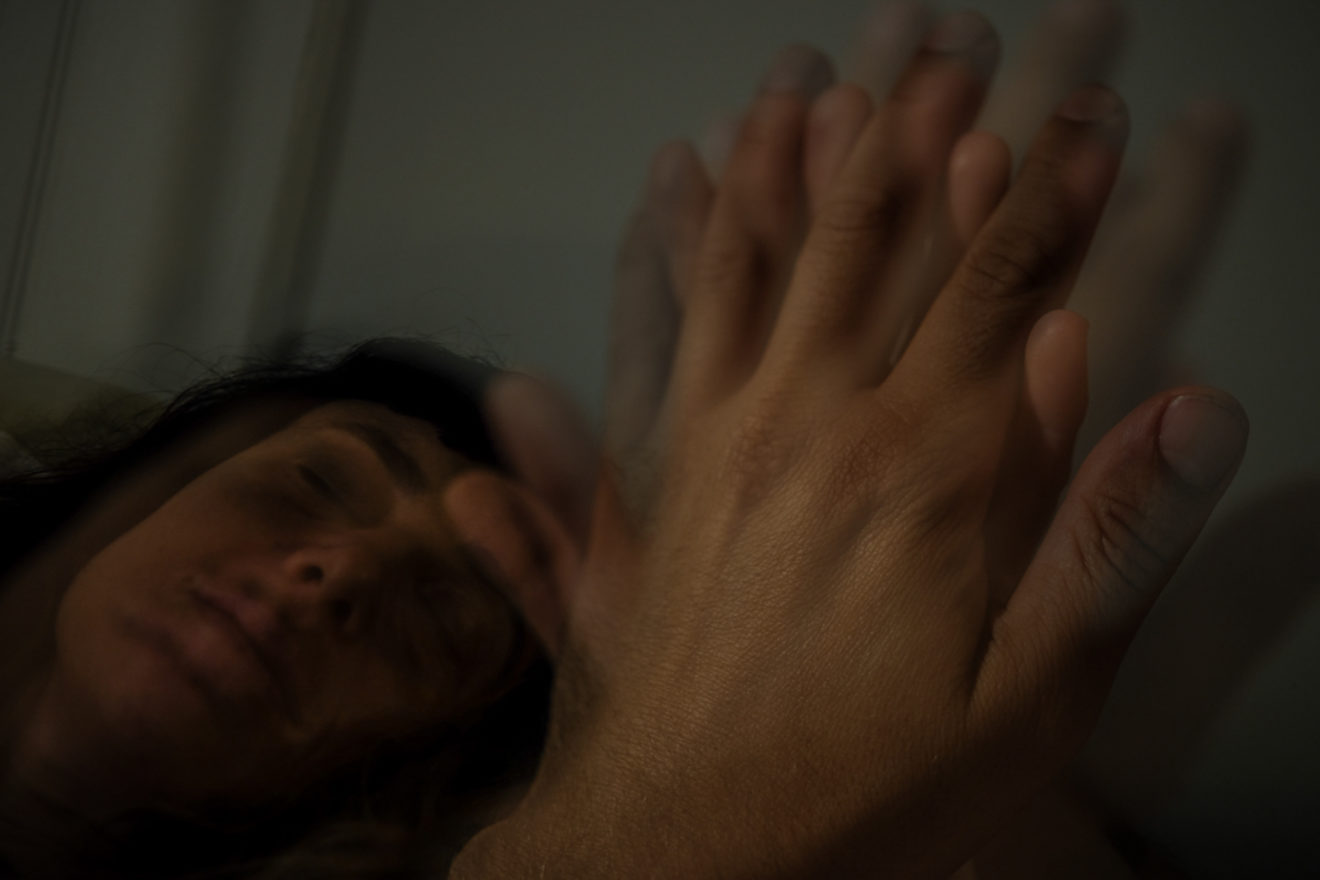
Matthew tries to encourage me: “My peripheral vision one day was still nonexistent and by the end of that day I could count my fingers. It was a wild day. It will come back dude.”
Once the gas bubble receded, I was left with what I can only describe as drunk eyes. Like a multi-exposure photo, there were two sights superimposed upon each other: one lucid and clear, the other out of focus and hazy.
Rian Dundon, a close friend and one of my favorite photographers, calls me shortly after hearing I’ve been shot. “You’re living a photographer’s worst nightmare,” he says. I smile. I understand what he means. But I find solace in being alive.
“I definitely think of myself as being pretty lucky — even in these circumstances,” I write to Matthew. “So I hold on to the ‘it could be worse’ and focus on the future and recovery … ”
“I don’t want to scare you, but … ”
I’m sitting on the front porch of a brick house in Kansas City, Missouri, when I’m asked a question that stops me dead in my tracks.
“I don’t want to scare you, but have you ever heard of sympathetic ophtha-something?” enquires Sean Stearns, a professional dog walker and sketch comedian.
Sean is referring to sympathetic ophthalmia, a rare syndrome in which the body’s immune system attacks the good eye of a person who’s been partially blinded due to ocular trauma. My palms clam up. Sean can read my body’s reaction.
“It is super, super rare and usually happens in the first couple of weeks after injury,” he adds. I gulp down my beer and take another bite of the pizza Sean and his girlfriend have bought for us.
Sean, 33, was debating with his doctors and girlfriend whether they should sacrifice his damaged eye to save his good one. On the same day as my injury, Sean had been shot in the face with a less lethal round during a protest. His left eye was now completely blind, and his ophthalmologists seemed to think that removing it could reduce the chances of sympathetic ophthalmia. But it would mean he’d have to wear a prosthetic for the rest of his life, not to mention the additional surgery to perform the enucleation.
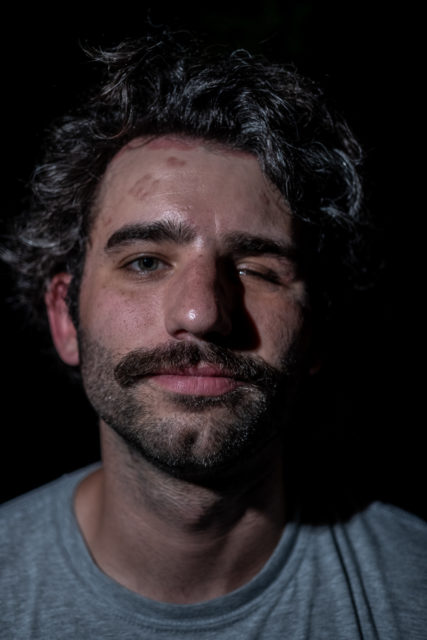
Losing sight in my good eye was the real nightmare that kept me up at night. An itchy piece of dust and a mundane cornea scratch could easily send me into a full-blown panic attack. So when Linda Tirado calls me to say she’s caught a virus in her good eye and is already losing sight, I almost drop the phone.
Linda, 38, a writer, independent journalist, mother of two and partner of a Marine vet, already had a lot on her plate when she set off for Minneapolis in May 2020. With little sleep and no guaranteed paycheck, Linda ran toward the tear gas. She was lining up a shot when a foam-nosed round burst through her protective goggles and tore her left cornea nearly in two.
“The ironic thing is it was the first story I was doing exclusively as a photojournalist,” she chuckles sarcastically, leaning back in her chair at a desk cluttered with notes and cigarette boxes. “Sorry for the chaos, virtual learning starts tomorrow.” Linda’s two daughters are in the other room reading and playing video games.
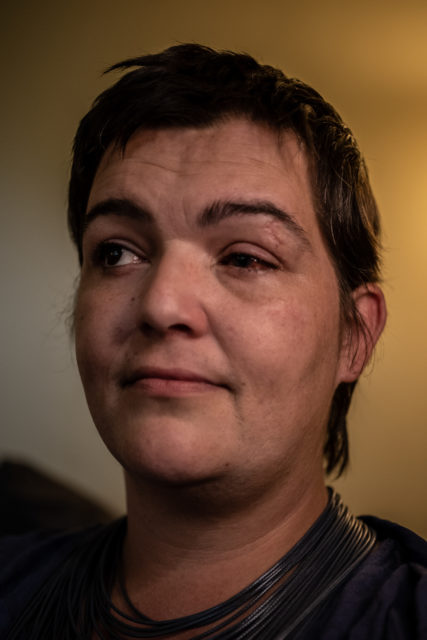
“We don’t talk about how often police escalate situations during protests,” says Linda, who has done many interviews about her experience and been outspoken in her condemnation of police brutality. Her critique of the police has made her a target of Blue Lives Matter activists.
Linda asked me to keep her location a secret because her public stature had attracted the worst kind of trolling. She told me death and rape threats quickly became a common occurrence in the comments of her social media feeds. But random angry white men showing up at her doorstep was literally hitting too close to home.
Linda wasn’t the only one fending off trolls. In Fort Wayne, Indiana, Balin Brake was accused by conspiracy theorists of being a trauma actor, faking his injury.
It was easy to spot Balin in Freimann Park, where we’d agreed to meet. He immediately caught the eye with his iris-and-pupil-less prosthetic. Balin, a recently unemployed video producer who had lost an eye when he was hit by a tear gas canister during a protest, wasn’t ashamed of his injury. He has a painted prosthetic that matches his other eye, but he says, “I know my eyes and it’s not my eye. I’d rather just … ”
I finish his sentence: “ … let people see you as you are.”
He nods his head: “Yeah.”
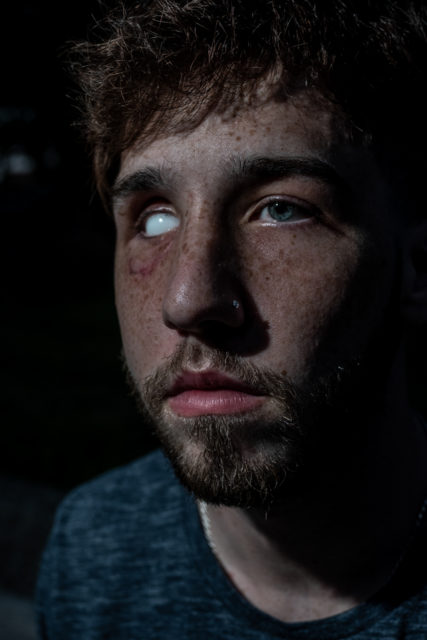
Fort Wayne is a small city, and news of Balin’s injury spread fast. On more than one occasion, his blank white prosthetic gave him away. For some he was a hero; to others he was a disgrace to his Caucasian heritage. White supremacists trolled his social media accounts.
“We have an obligation to tell the world what happens when these devices are used.”
By the end of August, some city governments, like those in Philadelphia, Seattle and Portland, Oregon, had responded to public outcry and enacted limited restrictions on the use of less lethal weapons for crowd control. However, most law enforcement agencies continued to deploy these devices, and some were even expanding their arsenals.
Dr. Williams is adamant that the AAO is committed to condemning the irresponsible use of less lethal weapons. “As the officials who deal with the ramifications of the use of these devices, we feel we have an obligation to tell the world what happens when these devices are used,” he says. “So, we will continue to do that. I can’t see that we would stop.”
It’s a step in the right direction, but those of us who have been shot want more.
Vincent Doyle, an amateur photographer, wants our suffering to mean something: “I was thinking, if there’s so many people, I asked my lawyer, ‘Do you think there’s gonna be a class action lawsuit?’ … ’cause this is nationwide! … Or I mean just as a group come together and — I dunno — do something … even if it’s creative or legislative.”
Vincent’s transformation from witness to victim to self-advocate was immediate. It forced him to personally engage with the violence of the institutional racism he’d faced his whole life.
After he was shot in Dallas, Vincent moved home to Atlanta for his recovery. I was taken aback when he greeted me in a parking lot. The beanbag had collapsed his left cheek. The symmetry of his face didn’t resemble his handsomely boyish self-portraits I’d seen on Instagram. My internal recoil caused a small part of me to die of shame.
Vincent went to the protests with the intention of taking some pictures. But when he saw the red dot of the laser sight dance across his body, he realized that the police didn’t always make distinctions between participants and witnesses.
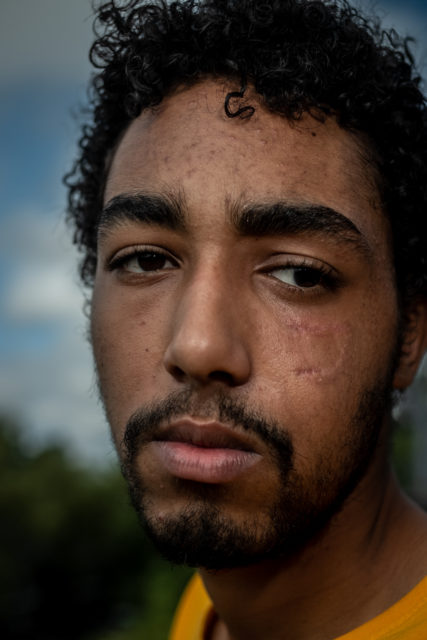
“Either I run or I hide under the car or I just stay here and hope they don’t do anything,” he recalls thinking. “I remembered whenever my dad had an encounter with the police, he’d take out his phone. So that’s what I did. I didn’t even know I was recording.” The 22-year-old recorded the shot that would forever change his life.
While in the hospital, Vincent was visited on three separate occasions by police officers over the course of four days. Vincent says that some of these interrogations took place while he was on painkillers administered via an intravenous drip. No lawyer was ever present. To add insult to injury, Vincent tells me that the hospital rescinded its initial offer of pro bono care when the video he’d recorded went viral online. In the video, Vincent can be heard cursing at the police as they shoot at him; he assumes the hospital didn’t want to be associated with his foul mouth.
“Then what?”
Back in Richmond, Virginia, where I live, protests continued through August. Some of the Confederate statues decorating the former rebel capital came down. But for local activists like Frank Hunt, it wasn’t enough. “After the statues come down, then what? New laws are passed, then what? New politicians elected, then what?” The 30-year-old artist was angry. He was a “frontliner.” He told me he’d been on the street every day since the protests started, right up until a Richmond police officer shot him with a foam-nosed round.
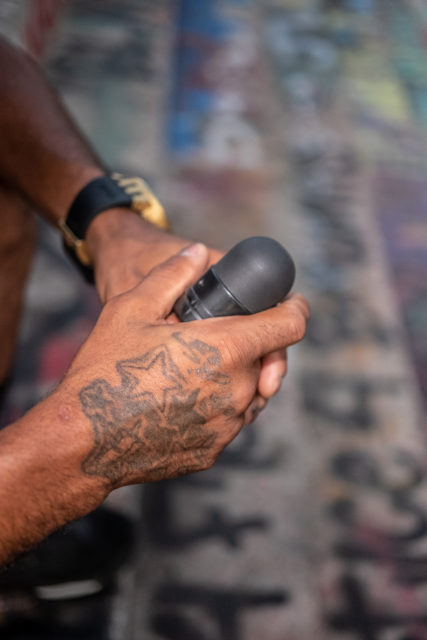
When we met in Marcus David Peters Square, the center of the Richmond protests, Frank still hadn’t received medical attention. It had been nearly three months since he’d been shot. When I asked him why, he avoided the question. Maybe he feared the kind of unwanted hospital visits from police that Vincent had received. Maybe he didn’t have health insurance. Maybe he didn’t want to face the reality of his eye injury.
But Frank didn’t shy away from the struggle. He explained to me that he’d had run-ins with the law and served his time in prison.
I asked him to pose on the Robert E. Lee statue layered in colorful anti-racist graffiti. He looked directly into the camera, an eye patch covering his left eye, and held back his dreadlocks. “My skin color is not a crime” declared his T-shirt to the world.
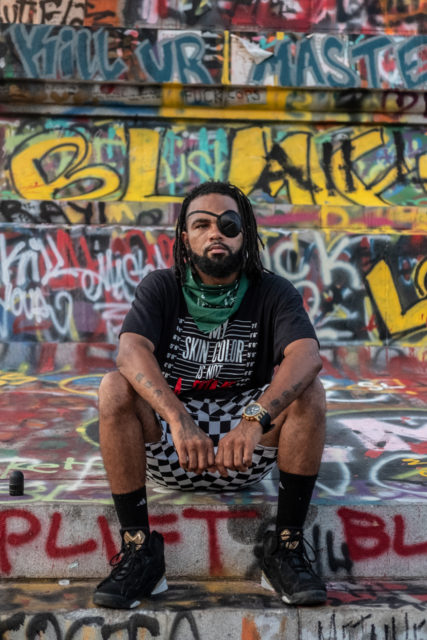
I ask him if he would have done things differently if he could.
“Hell no,” he replies. “I don’t regret being there! Finding selfless service is difficult.”
“Sometimes it all piles on.”
Months have passed since I did the interviews and portraits for this article. While we all shared the trauma of being shot in the face and losing sight, our experiences of that trauma were defined by the same inequities that tinge the rest of American life. Our physical injuries varied in severity, but so did our access to quality medical care, trustworthy legal counsel, and supportive social networks.
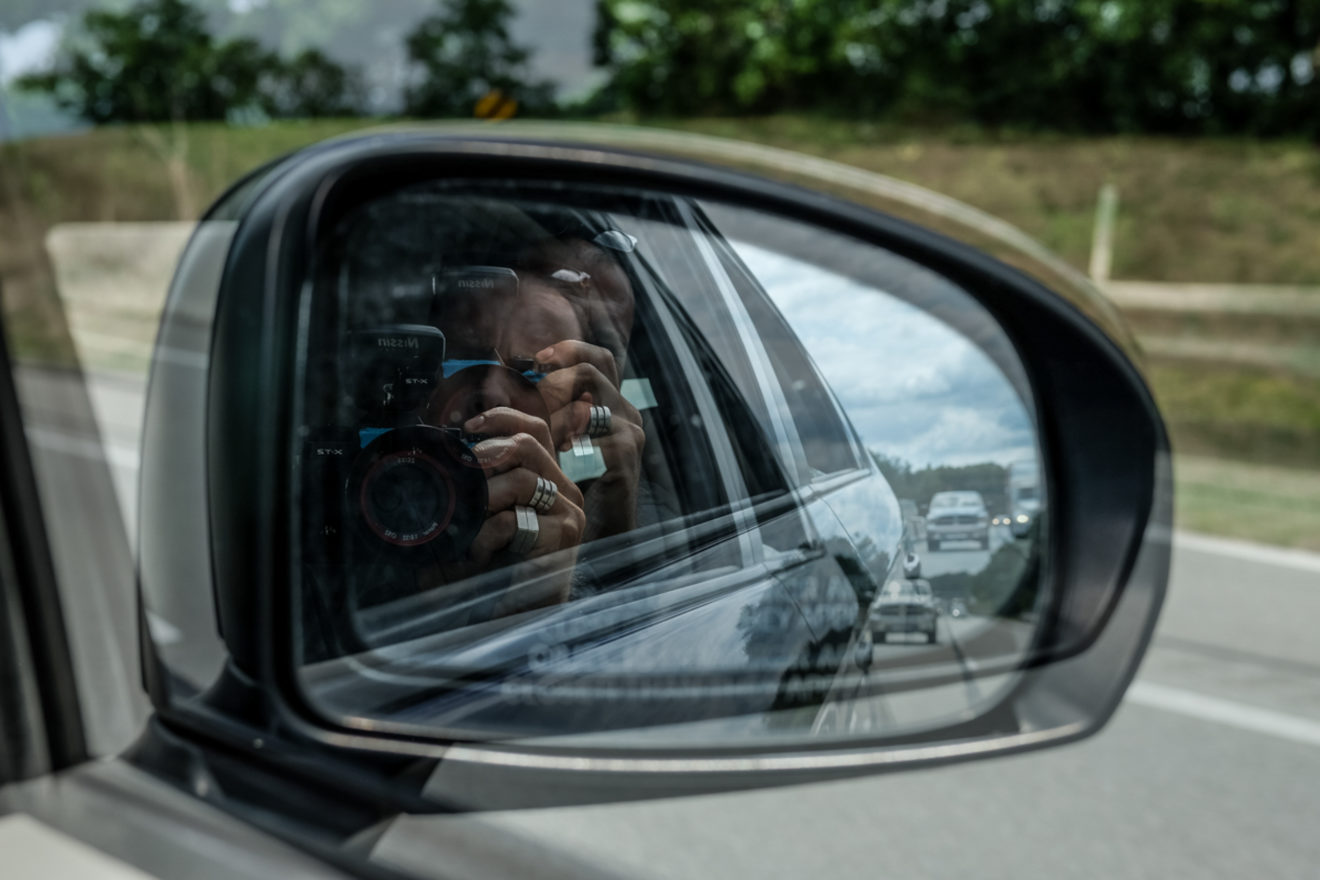
Personally, I tried a therapist for the first time in my life. We had two Zoom sessions and then I ghosted him. Our conversations felt forced and distant. I needed instant feedback.
Instead, meeting and interviewing other people who’d been “blinded by police” became a form of self-therapy. As John Sanders had told me in Akron: “Sometimes it all piles on, all on one day, all at one time. It can be a lot to deal with.” Taking pictures and telling stories helped me process, it helped keep the piling up of emotions manageable.
In October 2020, I created a chat group on a secure messaging platform for what we called the “Shot-In-The-Eye-Squad.” Inspired by the organizing of the Coordinadora in Chile, I wanted to connect all of the people I’d interviewed. I hoped sharing their stories with each other could be as therapeutic for them as it had been for me.
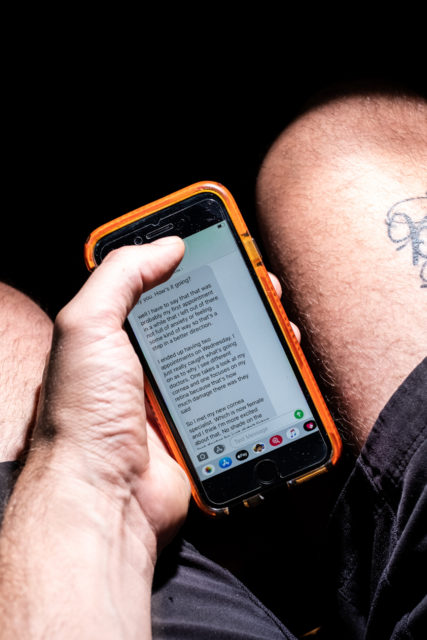
In no time the group grew to 12 participants and became a space to celebrate individual triumphs like a successful surgery, or to soften the momentary defeats of bad news from a doctor. We compared diagnoses and indulged in off-color eye humor. There were moments of mourning, but we were building solidarity, and that solidarity has helped to offset some of the inequities of our circumstances.
In the months that followed, the group continued to grow organically. Instead of me adding new members to the chat, other members found more people who had been shot in the eye and encouraged them to join the group. For the first time in my professional life, I felt like my work was having a tangible impact on the world.
Usually photojournalists spend infinite amounts of time researching and developing story pitches. On a rare occasion though, the story of your career quite literally smacks you in the face.
This story was supported by the Pulitzer Center











